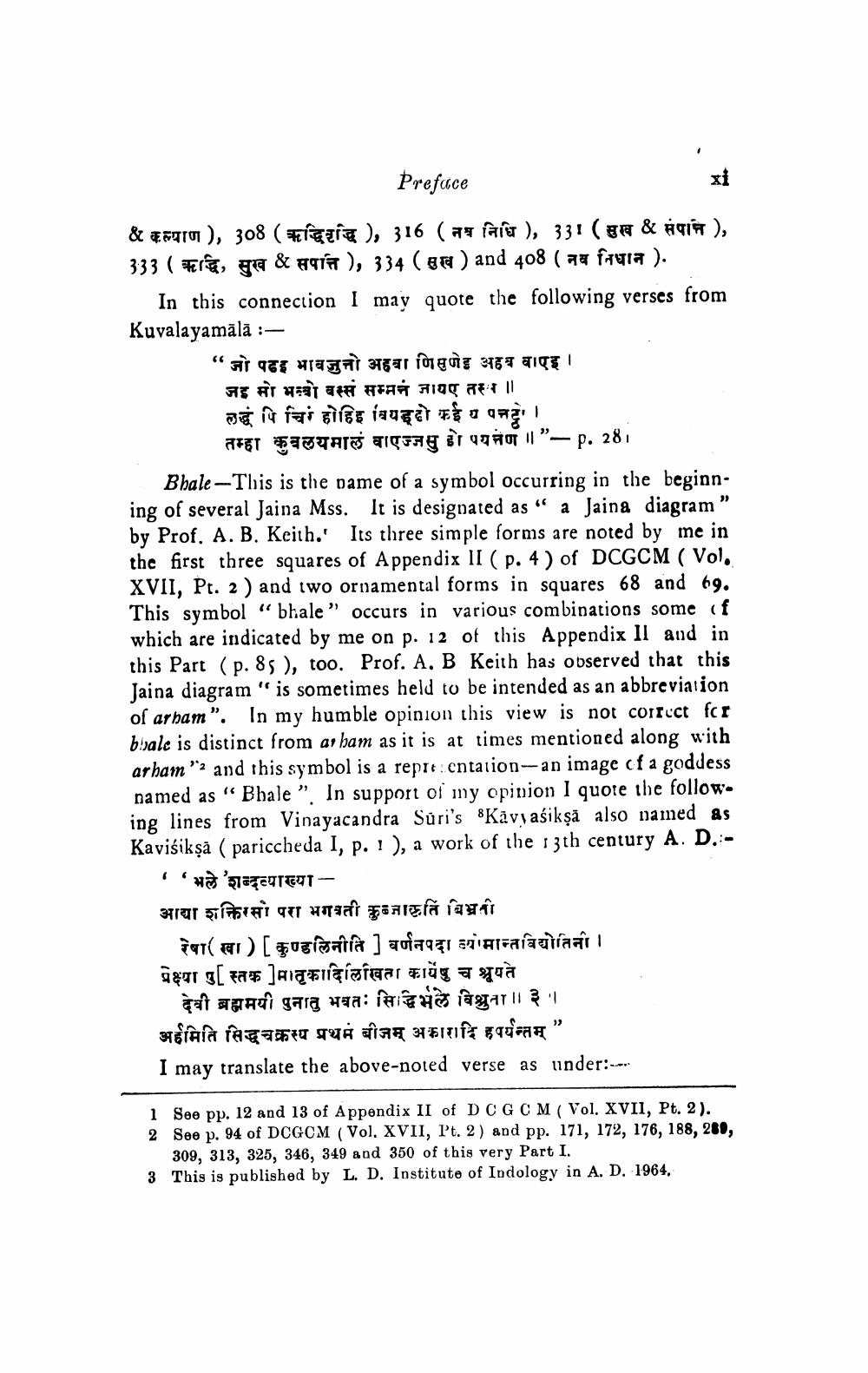________________
Preface
& कल्याण ), 308 (ऋद्धिद्धि ), 316 ( नव निधि ), 331 (सुख & संपानि ), 333 ( कद्धि, सुख & सपत्ति ), 334 (सुख ) and 408 ( नव निधान ).
In this connection I may quote the following verses from Kuvalayamala :
"जो पढह भावजुनो अहवा णि सुणे अहव वाएइ । जह मो भन्यो बस्सं सम्मनं जायए तस ॥ लद्धं पि चिरं होहिह वियड्दो कई य पनट्रो ।
तम्हा कुवलयमालं वाएज्जसु डो पय नेण ॥"-p. 28। Bhale - This is the name of a symbol occurring in the beginning of several Jaina Mss. It is designated as “ a Jaina diagram” by Prof. A. B. Keith.' Its three simple forms are noted by me in the first three squares of Appendix II (P. 4) of DCGCM ( Vol. XVII, Pt. 2 ) and two ornamental forms in squares 68 and 69. This symbol " bhale" occurs in various combinations some of which are indicated by me on p. 12 of this Appendix Il and in this Part (p.85), too. Prof. A. BKeith has observed that this Jaina diagram " is sometimes held to be intended as an abbreviation of arham". In my humble opinion this view is not correct for bbale is distinct from ar ham as it is at times mentioned along with arham" and this symbol is a repit:entation-an image of a goddess named as “ Bhale”. In support of my opinion I quote the follow. ing lines from Vinayacandra Súri's Kavyasikşă also named as Kaviśikṣā (pariccheda I, p. 1), a work of the 13th century A. D.
' 'भले 'शब्दव्याख्याआद्या शक्तिरसो परा भगवती कुब्जाकृतिं बिभ्रती
रेषा(खा) [ कुण्डलिनीति ] वर्णनपदा व्योमान्तविद्योतिनी । प्रेक्ष्या तु[स्तक मातृकादिलिखिता कार्येषु च श्रूयते
देवी ब्रह्ममयी पुनातु भवतः सिद्धिर्भले विश्रुता ।। ३ । अहमिति सिद्धचक्रस्य प्रथम बीजम् अकारादि हपर्यन्तम्" I may translate the above-noted verse as under:-...
1 See pp. 12 and 13 of Appendix II of DC G CM ( Vol. xVII, Pt. 2). 2 See p. 94 of DCGCM ( Vol. XVII, Pt. 2) and pp. 171, 172, 176, 188, 280,
309, 313, 325, 346, 349 and 350 of this very Part I. 3 This is published by L. D. Institute of Indology in A. D. 1964,




